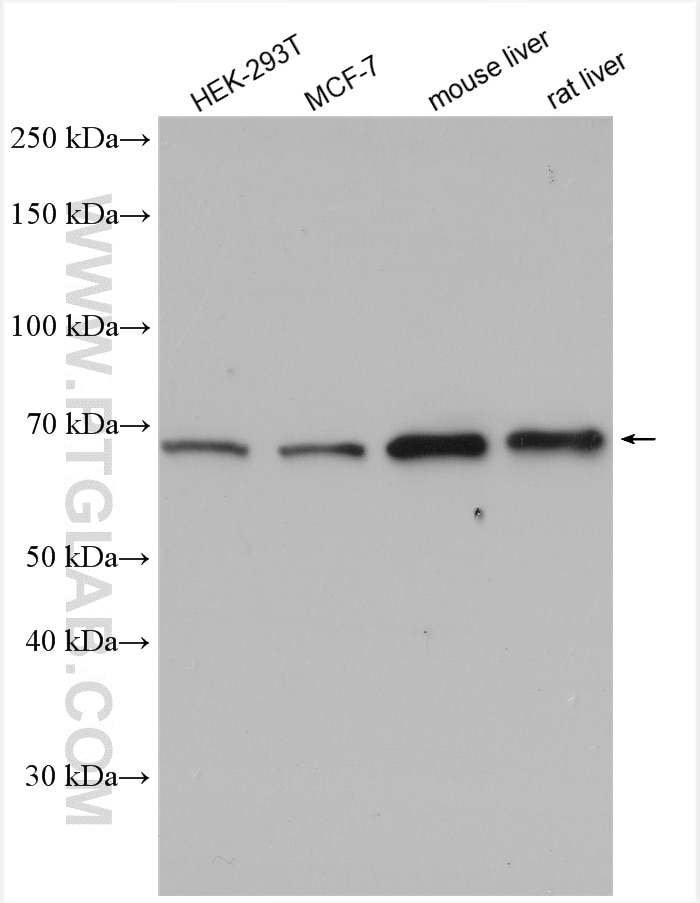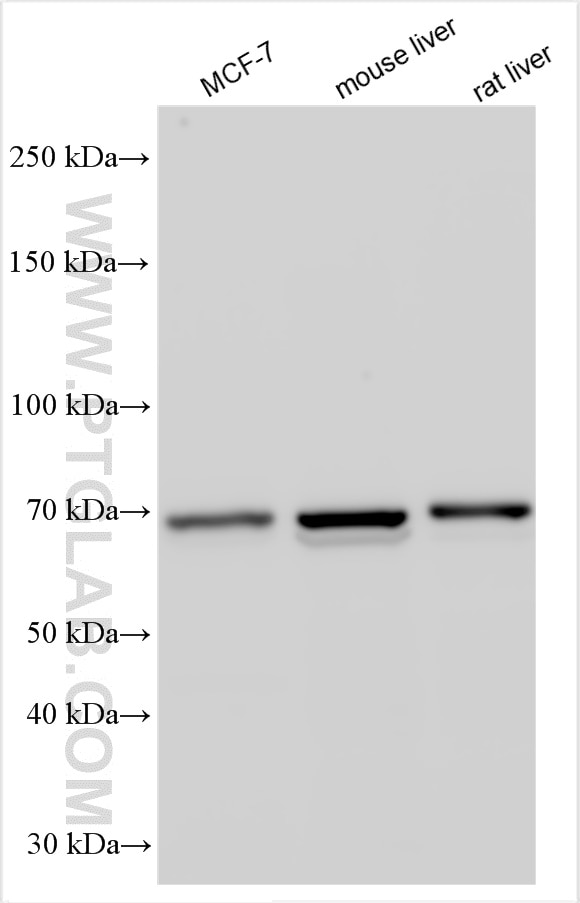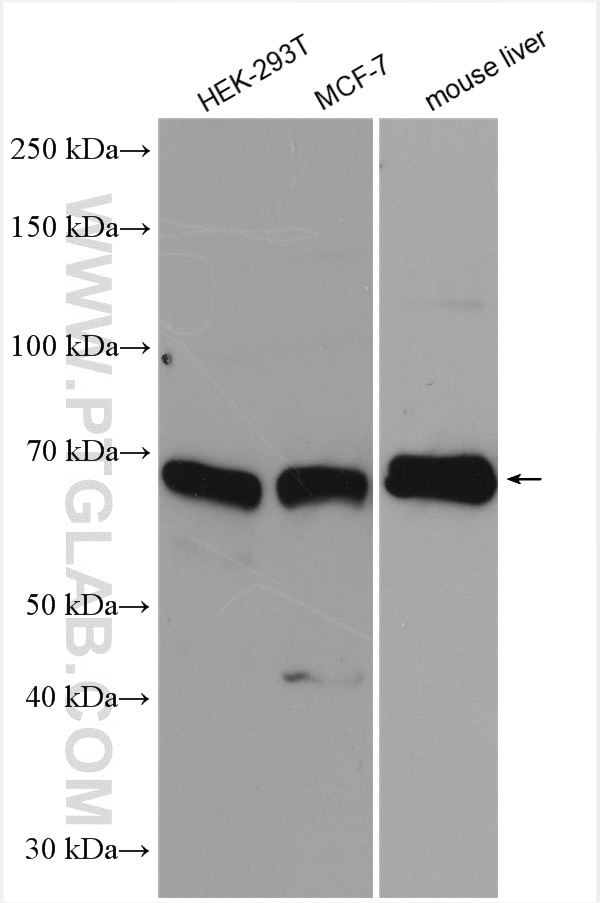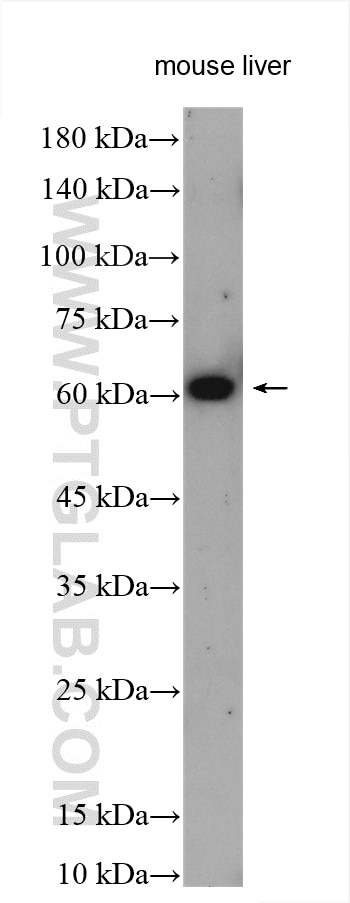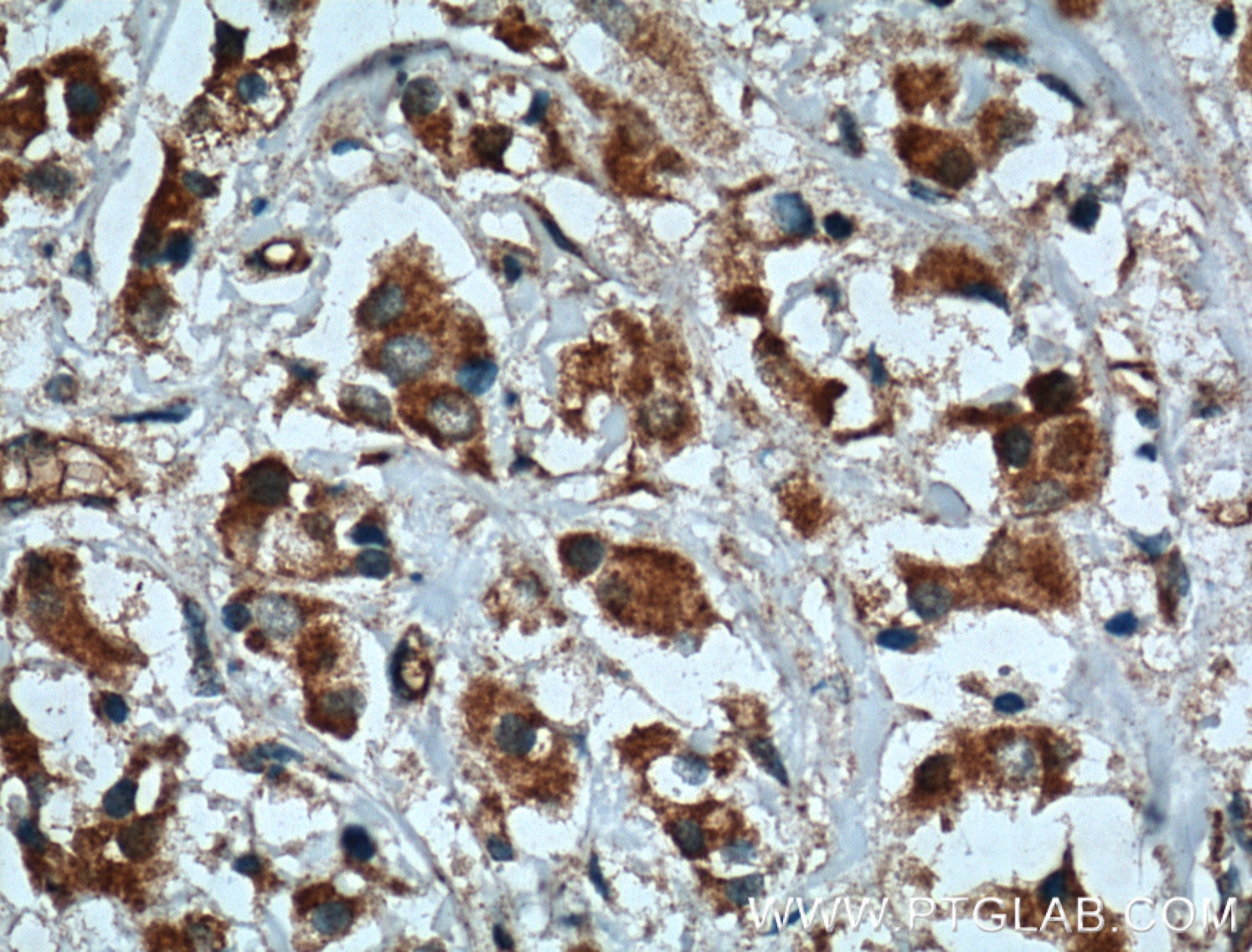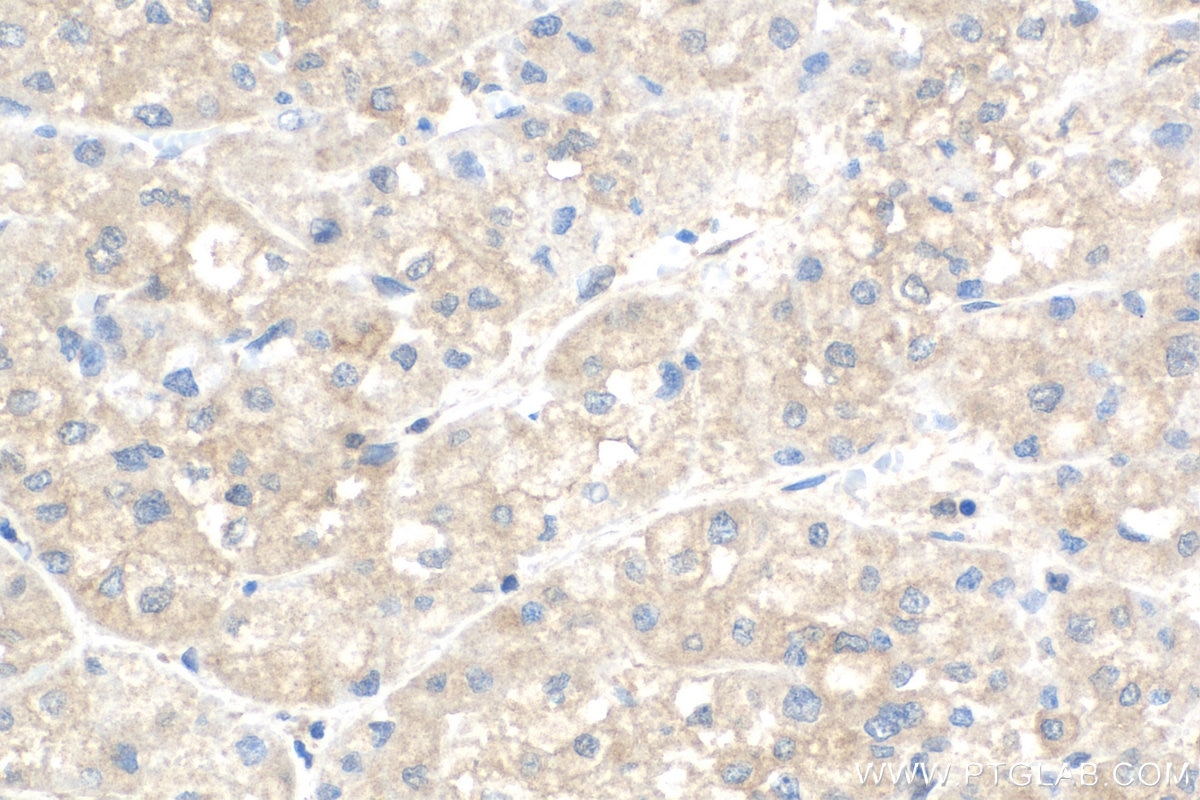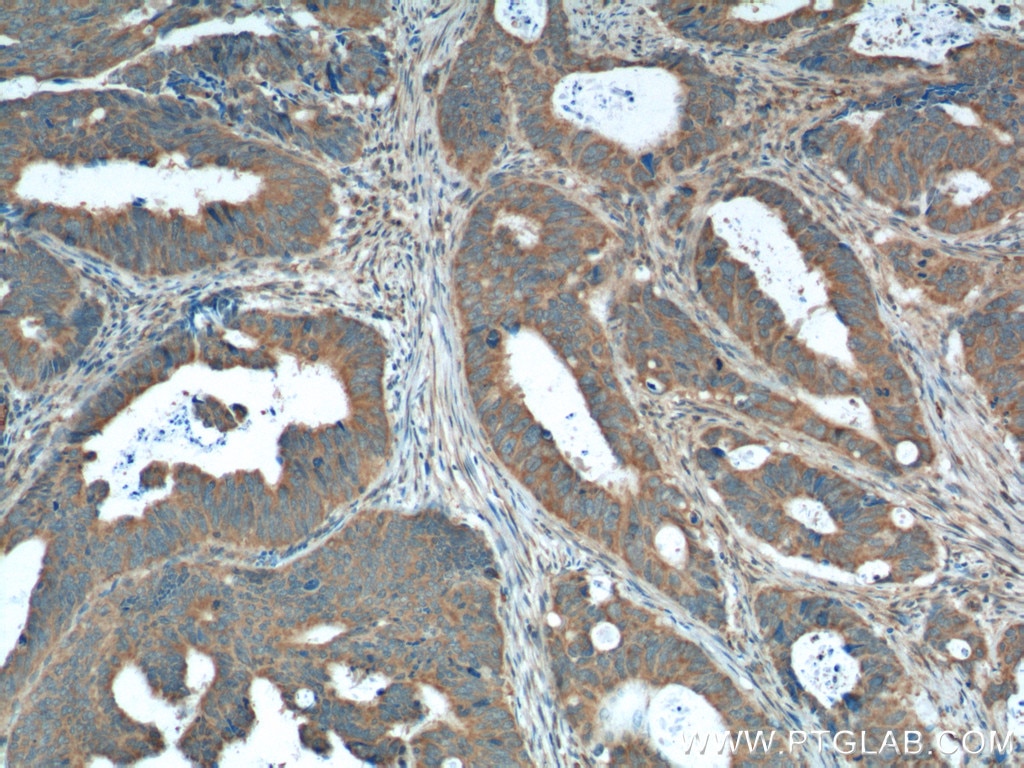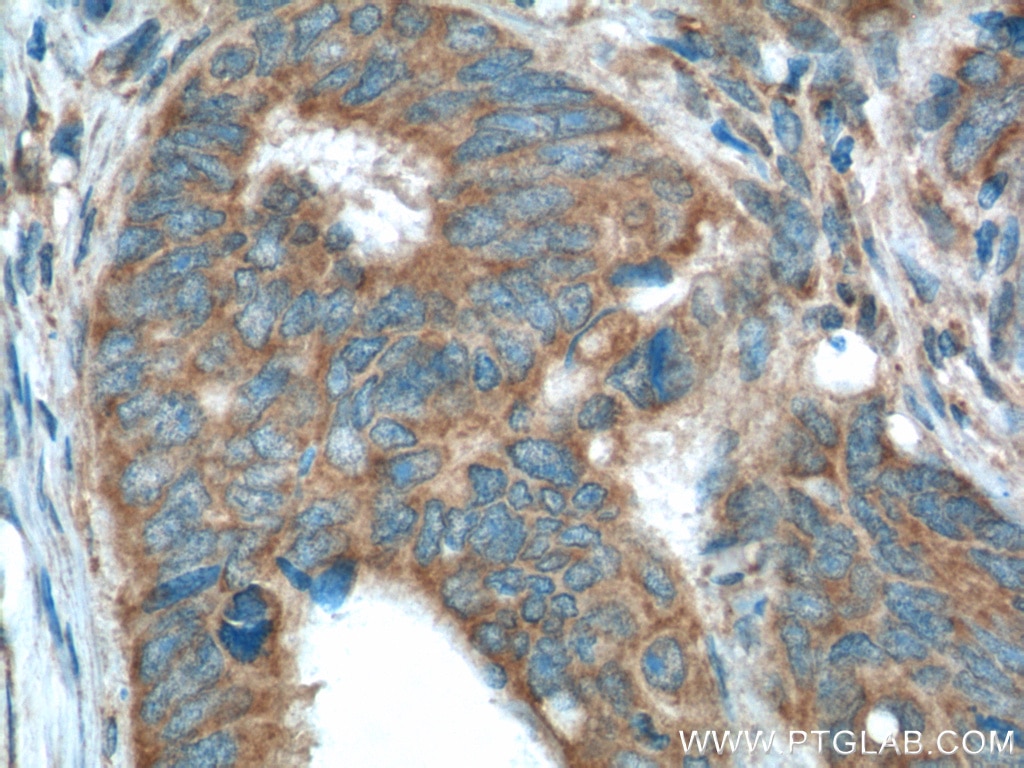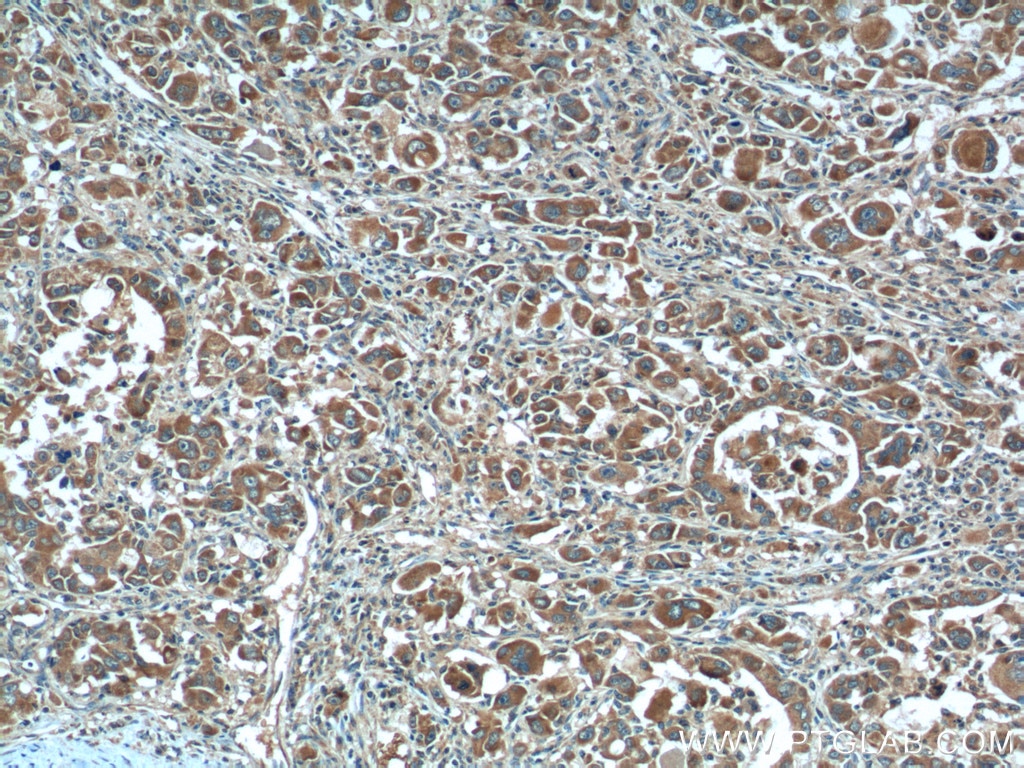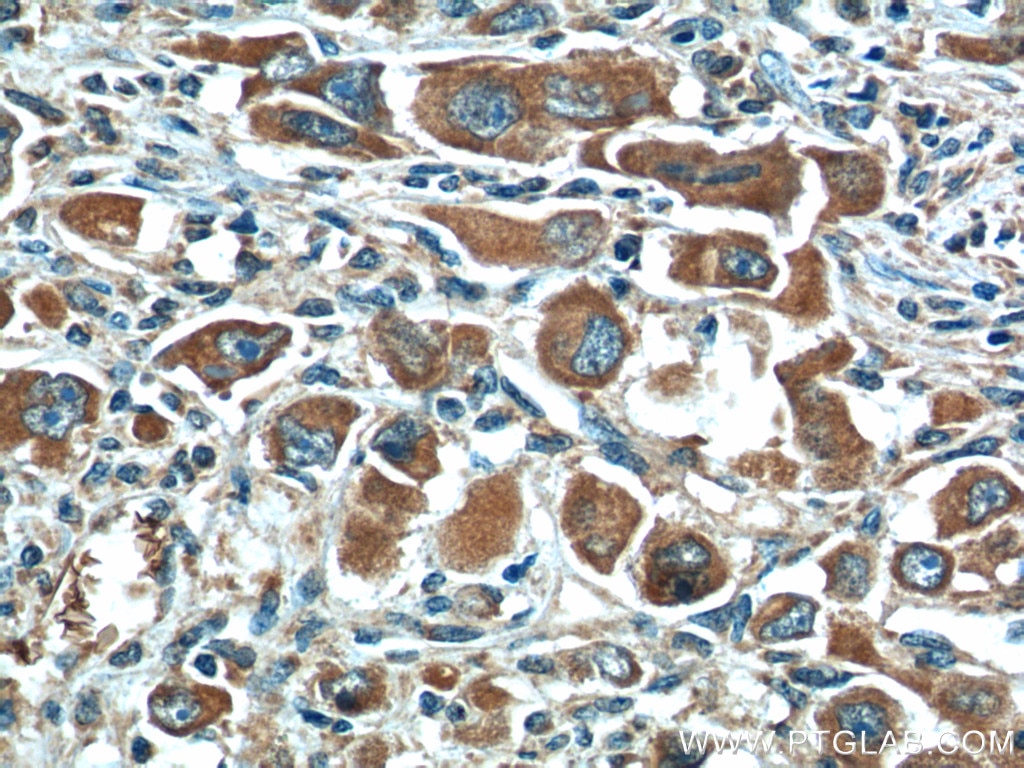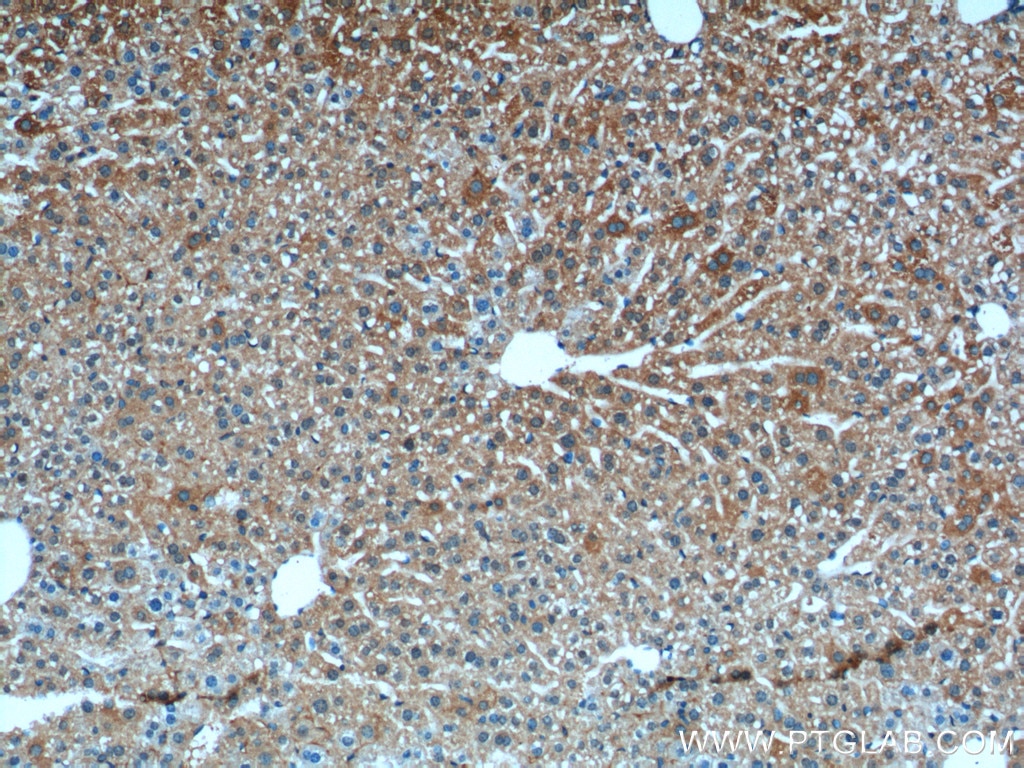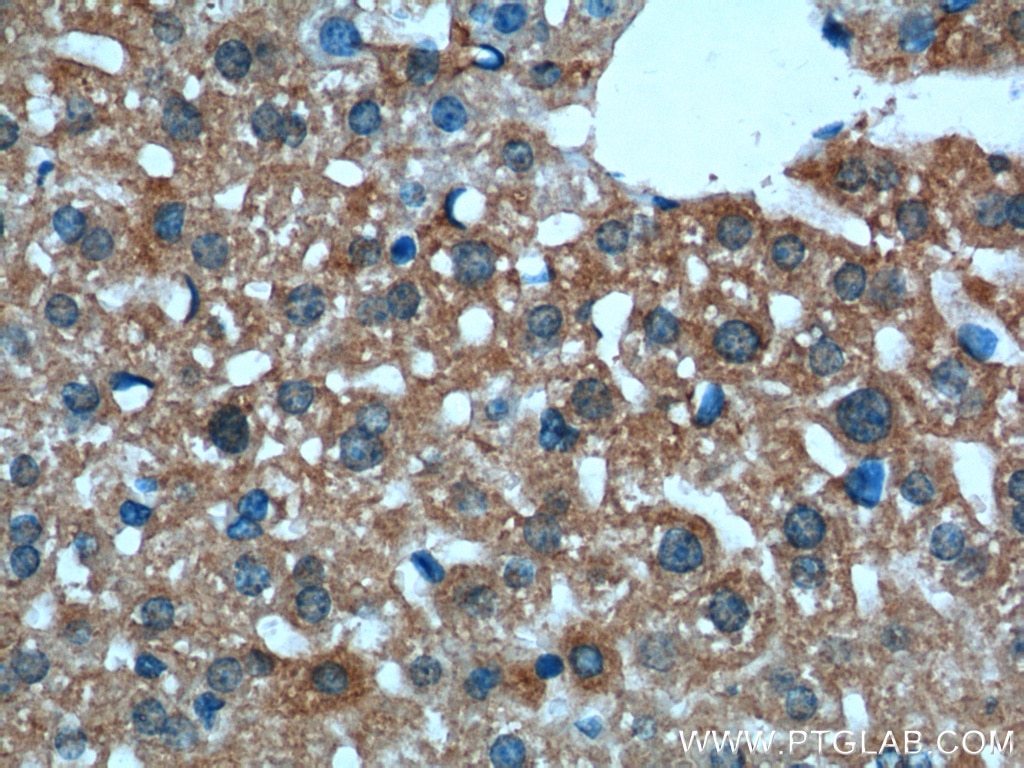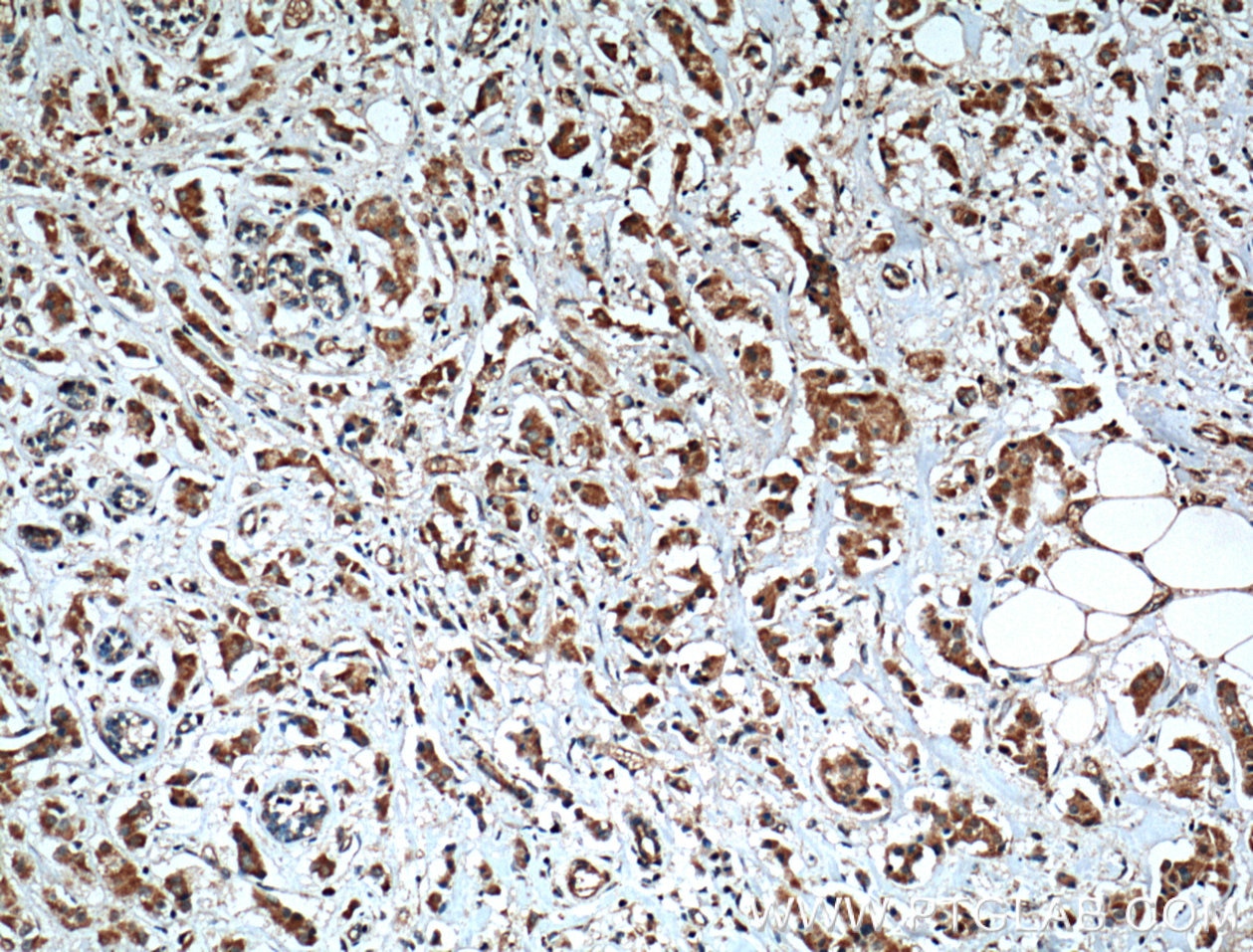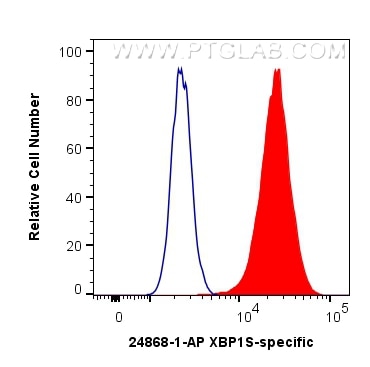Tested Applications
| Positive WB detected in | HEK-293T cells, MCF-7 cells, mouse liver tissue, rat liver tissue |
| Positive IHC detected in | human breast cancer tissue, human colon cancer tissue, human liver cancer tissue, mouse liver tissue Note: suggested antigen retrieval with TE buffer pH 9.0; (*) Alternatively, antigen retrieval may be performed with citrate buffer pH 6.0 |
| Positive FC (Intra) detected in | HepG2 cells |
Recommended dilution
| Application | Dilution |
|---|---|
| Western Blot (WB) | WB : 1:1000-1:6000 |
| Immunohistochemistry (IHC) | IHC : 1:50-1:500 |
| Flow Cytometry (FC) (INTRA) | FC (INTRA) : 0.40 ug per 10^6 cells in a 100 µl suspension |
| It is recommended that this reagent should be titrated in each testing system to obtain optimal results. | |
| Sample-dependent, Check data in validation data gallery. | |
Published Applications
| KD/KO | See 5 publications below |
| WB | See 104 publications below |
| IHC | See 10 publications below |
| IF | See 13 publications below |
Product Information
24868-1-AP targets XBP1S-specific in WB, IHC, IF, FC (Intra), ELISA applications and shows reactivity with human, mouse, rat samples.
| Tested Reactivity | human, mouse, rat |
| Cited Reactivity | human, mouse, rat, bovine |
| Host / Isotype | Rabbit / IgG |
| Class | Polyclonal |
| Type | Antibody |
| Immunogen |
CatNo: Ag21703 Product name: Recombinant human XBP1 protein Source: e coli.-derived, PGEX-4T Tag: GST Domain: 167-376 aa of BC000938 Sequence: GAGPVVTPPEHLPMDSGGIDSSDSESDILLGILDNLDPVMFFKCPSPEPASLEELPEVYPEGPSSLPASLSLSVGTSSAKLEAINELIRFDHIYTKPLVLEIPSETESQANVVVKIEEAPLSPSENDHPEFIVSVKEEPVEDDLVPELGISNLLSSSHCPKPSSCLLDAYSDCGYGGSLSPFSDMSSLLGVNHSWEDTFANELFPQLISV Predict reactive species |
| Full Name | X-box binding protein 1 |
| Calculated Molecular Weight | 261 aa, 29 kDa |
| Observed Molecular Weight | 45-65 kDa |
| GenBank Accession Number | BC000938 |
| Gene Symbol | XBP1 |
| Gene ID (NCBI) | 7494 |
| RRID | AB_2879766 |
| Conjugate | Unconjugated |
| Form | Liquid |
| Purification Method | Antigen affinity purification |
| UNIPROT ID | P17861 |
| Storage Buffer | PBS with 0.02% sodium azide and 50% glycerol, pH 7.3. |
| Storage Conditions | Store at -20°C. Stable for one year after shipment. Aliquoting is unnecessary for -20oC storage. 20ul sizes contain 0.1% BSA. |
Background Information
XBP1, also named as XBP2, belongs to the bZIP family. The X-box-binding protein-1 (XBP1) is a transcriptional regulator of the ER stress response that lies downstream of inositol-requiring enzyme 1 (IRE1α) activation (PMID: 14559994). XBP1 localizes in the nucleus. As a transcription factor, it is essential for hepatocyte growth, the differentiation of plasma cells, the immunoglobulin secretion, and the unfolded protein response. XBP1 has an association with major affective disorder. The unspliced XBP1U isoform is composed of 261 amino acid residues, and the spliced XBP1S isoform is composed of 376 amino acid residues. The calculated molecular weight of protein generated from the unspliced XBP1 isoform XBP1U mRNA is 33 kDa, and protein generated from spliced XBP1 isoform XBP1S mRNA is 40 kDa, and shows at 45-65 kDa range. This antibody specially recognizes the XBP1S isoform.
Protocols
| Product Specific Protocols | |
|---|---|
| IHC protocol for XBP1S-specific antibody 24868-1-AP | Download protocol |
| WB protocol for XBP1S-specific antibody 24868-1-AP | Download protocol |
| Standard Protocols | |
|---|---|
| Click here to view our Standard Protocols |
Publications
| Species | Application | Title |
|---|---|---|
Nat Commun A nanoemulsion targeting adipose hypertrophy and hyperplasia shows anti-obesity efficiency in female mice | ||
Acta Pharm Sin B The substitution of SERCA2 redox cysteine 674 promotes pulmonary vascular remodeling by activating IRE1α/XBP1s pathway. | ||
Nat Commun Activation of GCN2/ATF4 signals in amygdalar PKC-δ neurons promotes WAT browning under leucine deprivation. | ||
Cancer Lett LIMK1 m6A-RNA methylation recognized by YTHDC2 induces 5-FU chemoresistance in colorectal cancer via endoplasmic reticulum stress and stress granule formation | ||
Diabetes Lipid Droplets Protect Human β-Cells From Lipotoxicity-Induced Stress and Cell Identity Changes. | ||
Oxid Med Cell Longev Drp1-Mediated Mitochondrial Metabolic Dysfunction Inhibits the Tumor Growth of Pituitary Adenomas. |
Reviews
The reviews below have been submitted by verified Proteintech customers who received an incentive for providing their feedback.
FH Kevin (Verified Customer) (08-19-2019) | Good antibody. Clear and sharp bands on liver tissue from mouse.
|

